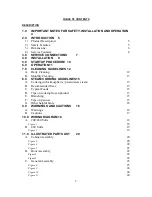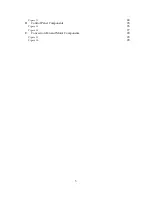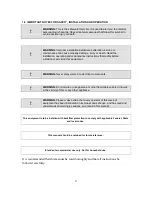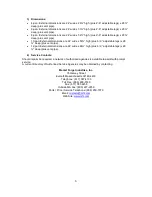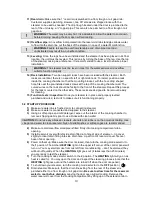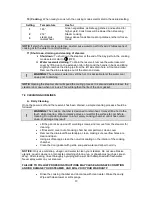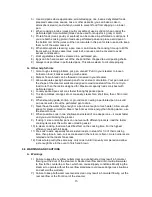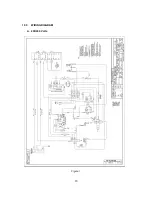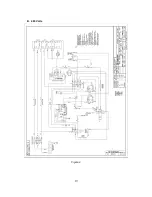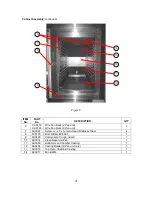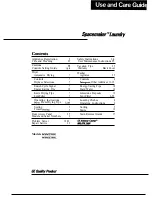
10
11) Rear drain:
Make sure the 1” rear drain is plumbed to a floor trough or air gap drain.
Customer supplies plumbing. However, two 90° elbows are shipped loose with the
steamer to be used as needed. The drip trough located under the door is plumbed to the
rear of the unit using a ½” copper pipe. This can also be plumbed to a floor trough or air
gap drain.
12) Overflow pipe:
An overflow incorporated into the reservoir drain standpipe allows water
to flow into the drain line out the back of the steamer in case of a waterfill malfunction.
13) Leveling:
Once the legs have been installed and the steamer has been placed in its final
location, the unit must be leveled. This is done by turning the base of the leg. Use the top
of the steamer casing as a reference. It is recommended to use a level to ensure proper
installation.
14) Rack Installation:
Two pan support racks have been included with the steamer. Both
racks are identical; there is no specific left or right side rack. To install, position a rack
inside the cooking chamber so that the mounting bracket, with the ‘tear-drop’ shaped
hole, fits over the pre-installed rack screws at the top of the cooking chamber wall. The
curved wires on the rack should be facing to the front of the steamer. Repeat this process
for the rack mounted on the other side. These racks are designed to be removed easily
for cleaning.
15) Function tests / inspection:
Once your steamer is in place and properly leveled,
plumbed and wired, test unit to make sure it is functioning properly.
5.0 STARTUP PROCEDURE
1)
Make sure water line is flushed prior to connecting steamer.
2)
Make sure water is connected and supplied to the steamer.
3)
Using a soft sponge and mild detergent, wipe out the interior of the cooking chamber to
remove shipping debris prior to use. Rinse with clean water.
4)
Make sure drain/overflow standpipe is fitted firmly into cooking compartment drain
opening.
5)
Install reservoir cover with left side drain fitted into hole at side of steamer – tip cover
slightly to insert drain fitting into side drain hole. Lip at front of reservoir cover fits over
base of door opening.
6)
Power on/heat up: Make sure the door is closed, then turn the cooking mode selector to
the
1
position. The Amber
HEATING
light on the upper left corner of the control panel will
turn on. You may smell smoke from oils left from manufacturing – don’t be alarmed, they
will burn off quickly. When the
HEATING
light goes out (it takes less than 25 minutes)
you are ready to test the steamer.
7)
Turn the cooking mode selector switch to the
2
position. The
HEATING
light will go on as
heat is called for. You may open the door and inspect the steaming process (note that the
HEATING
light goes out and the heaters are turned off when the door is opened).
8)
To shut down your steamer, turn the cooking mode selector to the
OFF
position (
).
9)
Drain steamer: Make sure that the drain line exiting from the rear of the steamer is
plumbed either to a floor trough or air gap drain.
Be sure to allow time for the reservoir
water to cool before draining.
Leaving the door open will aid cooling. Remove the
water reservoir cover from the cooking compartment by lifting up on the extension tab in
!
WARNING:
The water may be very hot. It is advisable to allow the water to cool down
before draining. Leaving the door open will aid cooling.
!
WARNING:
Failure to keep the overflow standpipe and drain pipe clear and
unobstructed may result in an unsafe condition.
!
WARNING:
The steamer must be level in order for the water sensors and overflow
outlet to function properly
CAUTION:
Do not use any abrasive cleaners, utensils or scrubbers on the non-stick coating. Use
vinegar and water to clean reservoir. Nylon bristle brushes or soft sponges are recommended.


